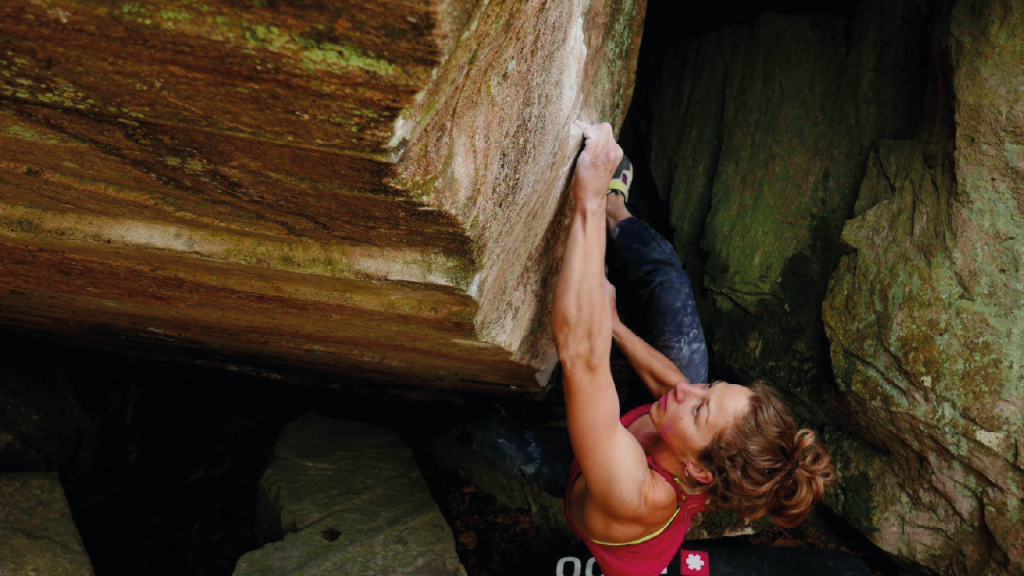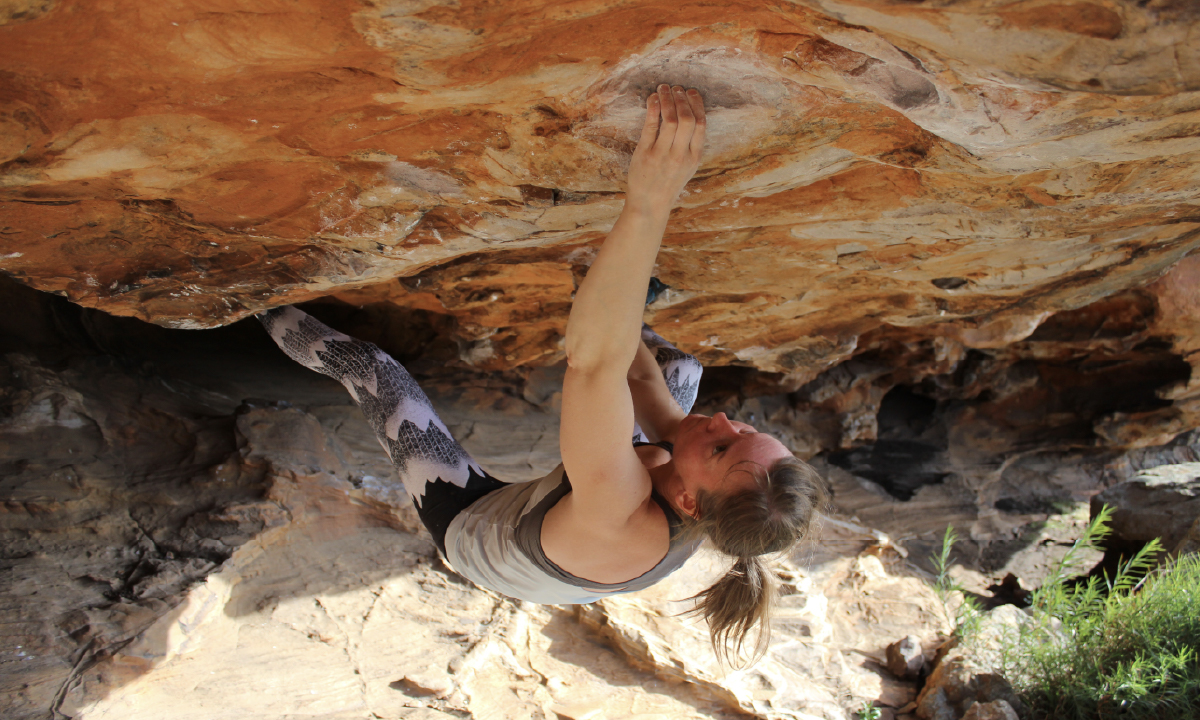Tips for Climbing 7A | Training Tips for Climbers
Climbing your first 7A is a universal benchmark in the climbing world. Many climbers see themselves in a plateau before breaking into the 7’s. So, we asked our coaches what advice they would give anyone trying break into the 7’s and climb their first 7A..
Tips from Coach Maddy Cope
Progressing into the 7’s is a great step in bouldering. When we are pushing our bouldering there are some key things I find useful to keep in mind. This doesn’t just apply to 7A, but all the boulders that have challenged me since then!
Pace and moving with intent
Some moves require patience and precision and others will benefit from moving fast and using momentum. Once I have worked out the beta in terms of sequence I find putting conscious thought into how I can best execute the beta useful. This keeps me focused and engaged in the process of refining the climbing.
Remember… if it was easy it wouldn’t be hard!
It is easy to fall into the trap of wanting things to feel easy when working a hard boulder. Particularly ones that require multiple sessions and working on individual moves. When bouldering moves may simply feel hard no matter how much you try different beta. Remember to stick with a certain sequence or beta for a few attempts. Work on really digging deep and giving 100% before you write it off. This is especially true when it comes to choosing between harder, faster beta options vs. slower, seemingly easier beta options.
Rest well
This is such as obvious one, but also an easy one to overlook. When motivation is high our perception of time changes. There have been countless times that I have felt my movement getting sloppy, started to power down, and regressed on a problem before I have really gotten into the groove. I think I am resting well between attempts but when I actually set the stop watch I realise that 3 minutes feel like a long time. Let alone 5 minutes. I find simple behaviours like taking off my climbing shoes help me pace myself and get the most out of my attempts.

Tips from Coach Ella Russell
One of the first 7As I climbed was Green Traverse at Stanage Plantation. Even though this was well over a decade ago, I still have strong memories from the day and the experience. This was one of my earliest experiences of pushing my limit bouldering. Here are some of the things I learnt from the experience which have stuck with me:
Play to your strengths when pushing your limit
At the time I knew that I was relatively strong in the fingers but my upper body pull strength wasn’t well developed. So I gravitated towards problems slightly off vertical where I could get away with mostly hanging below my fingers. Traverses presented a good option for this and many of my subsequent grade progressions started with this approach.
Become a well rounded climber
Having sent my first 7A I still knew that there were many ‘easier’ climbs in different styles that I still couldn’t touch. It’s easy to fall in to the trap of looking to push the next grade boundary as a form of progression. But in the long term this will neglect your overall development and movement skills as a climber. Yes, push your limit, but not all of the time. Spend some sessions working on problems that challenge you stylistically too.
Think about whether you have the beta dialled before trying it from the start
I remember a relatively powerful move from a rail with poor feet. Although I’d just about managed the move in isolation, I hadn’t properly learnt the body positioning and ideal foot placement for the movement which became obvious when I kept falling off on link! When at your limit, spending more time than you think you need to learn the individual movements and transitions is key.

Tips from Coach Tom Hill
Crossing the 7A barrier in bouldering opened my eyes to two game-changing habits that I would take forward with me into all future projecting.
Game Changing Habit #1: Actually trying harder boulders
It sounds obvious, right?! Like a lot of climbers facing a new grade boundary, I built it up in my head. 7A. Seven! It’s a whole new number! It’s going to be hard! So I went away and trained. And trained. And trained. One day I would be ready for this monster. Much later chatting to a friend about how I couldn’t yet climb Font 7A, he asked the magic question: “How many have you tried?”. Cue the lightbulb moment. I wasn’t giving myself the opportunity to climb this grade because I’d elevated it to some kind of climbing mythology. Go and try the grades. Get on those projects. Get a sense of the difficulty and lean into the learning process. Worst case scenario is you’ll come away with a roadmap that will get you to that next grade.
Game Changing Habit #2: Coming from a good deal of route climbing
I lacked a lot of the raw strength that my bouldering buddies were able to use on the wall. Trying to replicate their beta led to a lot of failure, little short-term progression and a lot of frustration. The game changed when I stopped climbing on autopilot and started thinking for myself. We can learn a lot from the climbers around us, but it’s important to mix that in with a heavy portion of individuality. Everyone is different, with unique morphology and strengths and weaknesses. Take the info on board, but file it under “maybe”. Try things out. Experiment. Get creative. It may or may not help you climb your first 7A, but it will definitely make you a better climber.

Tips from Coach Rafael Ford Gonzalez
When I first broke the 7A barrier it was around 4 or 5 years into my climbing and it was a super proud moment! There was certainly a shift in the way I approached things in that time.
Try really hard
One of the most powerful things that I changed in my climbing was simply learning to try really hard rather than just trying to find a fluid way to get up things. Being a sport climber who was pretty weak, my way of doing things was to try and be efficient and clever. But sometimes you just need to try really hard and pull really hard! Giving myself permission to be a little bit more ‘messy’ in my climbing allowed me to try way harder and complete harder moves.
Surround yourself with climbers better than you
The second thing that really helped was being around better climbers. This changed my mindset around grades and what I thought of as achievable and what I thought of as “hard”. Being around people who were supportive, and also climbed a fair few grades harder than I did, allowed me to pick up tips and tricks like how to make things easier, how to pace my climbing better and how to stick my knees into places. The skills and mindset that I learnt from these better climbers were invaluable in making me a better climber and allowing me to push into higher grades.
The other thing I learnt from these better climbers was that things close to your limit will never come quickly and they will require work and patience. Previously I had been pretty impatient giving a boulder a few goes or maybe a session and then moving on to the next boulder. I still don’t have season long boulder projects, but I am a lot more okay with spending a good number of sessions on a boulder and this has obviously allowed me to push the grades.
Want more help breaking into the 7’s? Check our our Training Plans to help you climb your first 7A.





